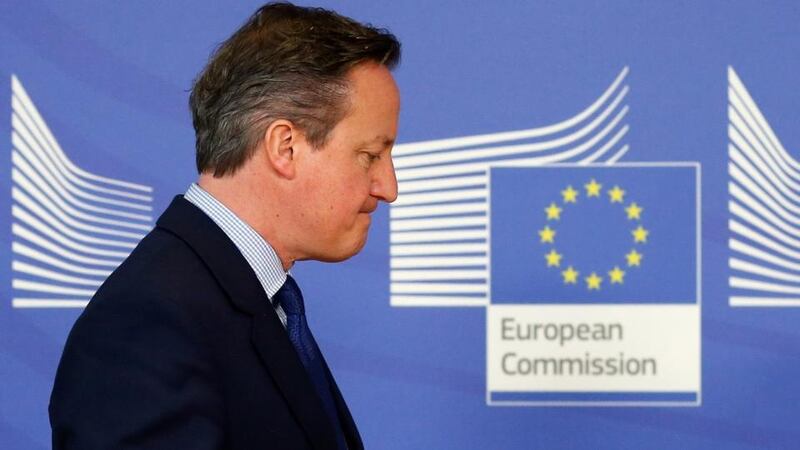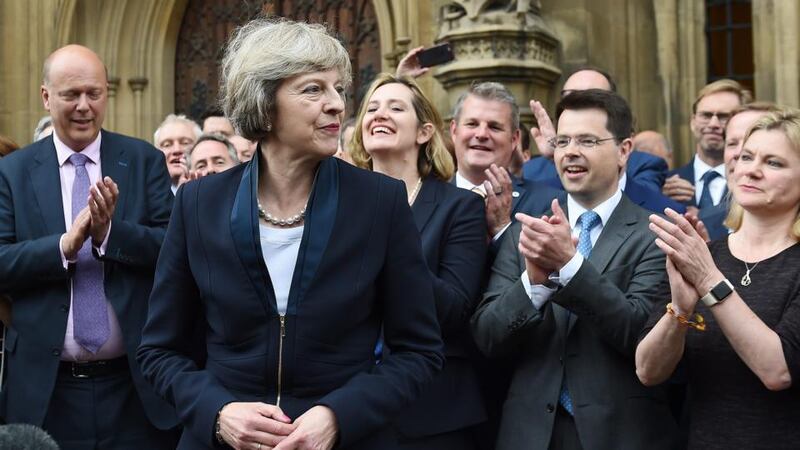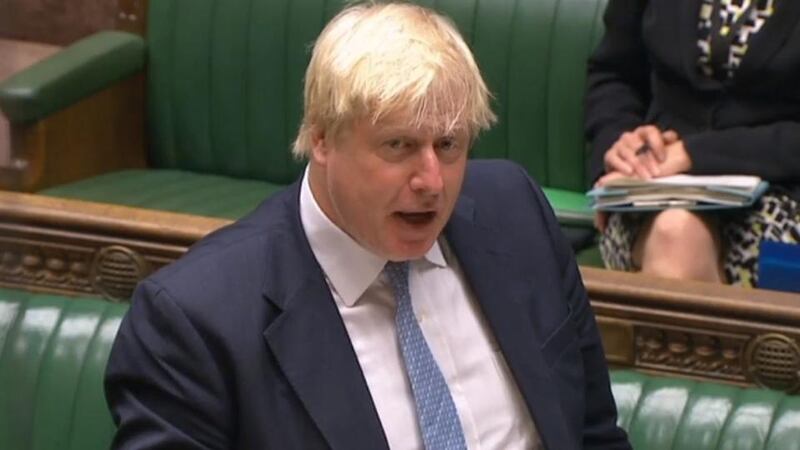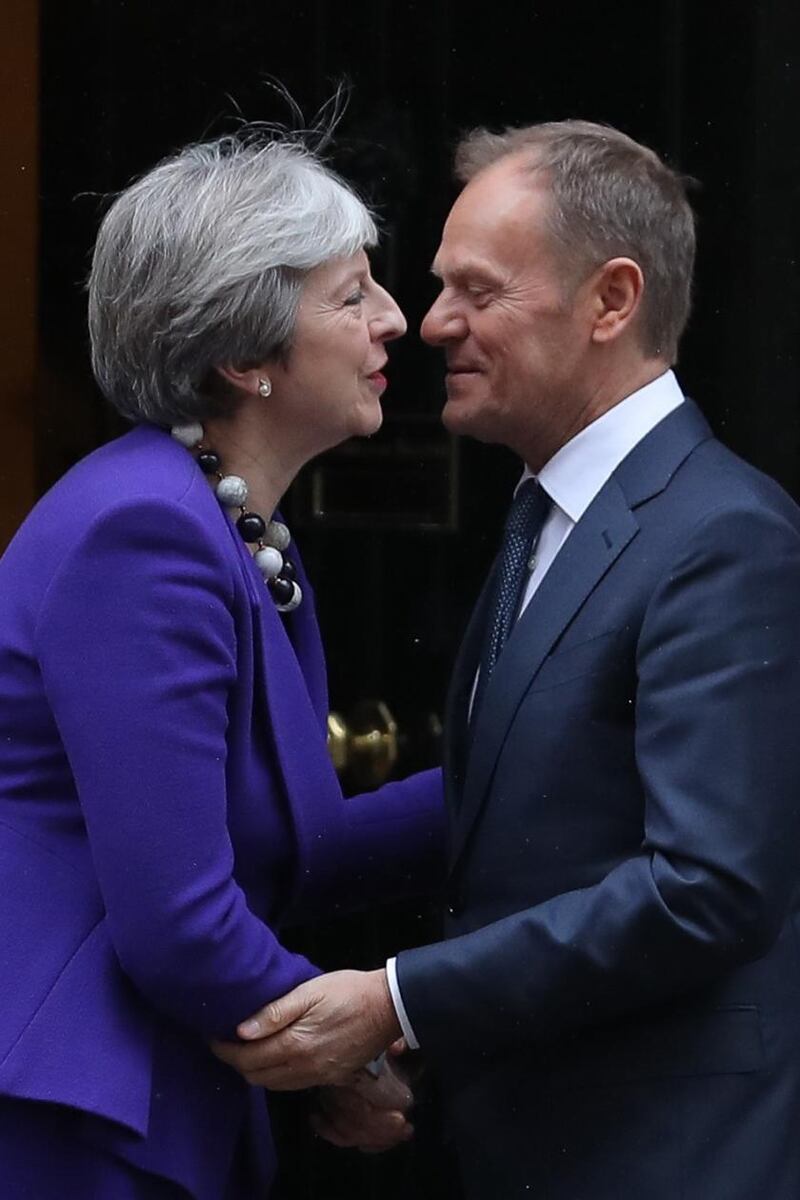We take a look at some of the key moments that got us to this point in the Brexit process:
June 2016
Prime Minister of the day, David Cameron makes the UK leaving the EU part of his party's election campaign manifesto. The UK votes for Brexit by 51.9 per cent to 48.1 per cent. Cameron, who votes to remain, resigns after the vote. Northern Ireland votes to remain in the EU and the future of the Irish border now raises a question: will a UK exit see a return to security and customs checkpoints?

July 2016
Theresa May becomes Prime Minister and vows that she will now push through Brexit. Even though a Remainer throughout the campaign, she starts to adopt a harder line and says no deal would be better than a bad deal. Stricter immigration is one of her top priorities so a soft Brexit starts to look unlikely.
November 2016
Business owner and activist Gina Miller initiates the 2016 R v Secretary of State for Exiting the European Union court case against the British government, over its attempt to implement Brexit without approval from Parliament. The High Court decides in favour of Miller.
January 2017
Through her famous Lancaster House speech where she set out red lines, Theresa May says the UK must leave the single market, to end freedom of movement; leave the jurisdiction of the European court of justice as well as leaving the customs union.
March 2017
On March 29th, Theresa May notifies Donald Tusk that she will trigger article 50 of the Lisbon Treaty and leave the EU when she secures parliamentary support.
June 2017
May calls a general election in the hope that she will win a strong majority. Instead she loses her majority and now has to rely on the support of the DUP- hard-line Brexiteers to prop up her party. The confidence and supply deal with the DUP is secured.
September 2017
May says that the divorce process between the EU and UK will take two years and that she will honour the financial commitment to the EU.

December 2017
A withdrawal agreement has been reached and EU leaders say talks can move on. However nobody is sure what will happen to the border between Northern Ireland and the Republic of Ireland. The "backstop" comes into play which would see the UK adhere to the single market's rules if no agreement is reached. This is to avoid a hard border. The DUP is very critical of this measure.
February 2018
EU publishes its legally binding withdrawal agreement with Irish protocol containing the backstop. Theresa May rejects this version saying no PM would ever accept it.
March 2018
May acknowledges that the UK can't have it both ways and that leaving the single market will mean restricted access to foreign markets. She also accepts that there needs to be a backstop.
July 2018
Following a meeting at the Prime Minister's country residence, Chequers, several members of Theresa May's cabinet, including Boris Johnson and her Brexit secretary, David Davis resign.

September 2018
May is told at a meeting with EU leaders in Salzburg that her plan is not acceptable and some sort of solution to the Irish border issue must be found. This is a massive blow to the Prime Minister.
October 2018
EU chief negotiator Michel Barnier publishes the de-dramatised backstop aimed at diminishing checks between NI and GB. The DUP remains against.
November 2018
A 585 page draft withdrawal agreement is drawn up after lengthy negotiations between Brussels and London.
December 2018
MPs were due to debate the withdrawal agreement before it is put to a "meaningful vote", but after heavy criticism of the deal and the expectation it would be voted down, the vote is delayed by the Prime Minister.
The Irish government publishes its plans for a No Deal Brexit and Tánaiste and Minister for Foreign Affairs Simon Coveney says that it makes for “stark and sobering” reading. He adds that this is a “damage-limiting exercise”.
Theresa May survives a no confidence vote with 200 voting in support and 117 against.
ECJ says the UK has a unilateral right to revoke article 50, meaning it can stop Brexit whenever it so wishes and without the imprimatur of the rest of EU27.

January 2019
Former chancellor and home secretary Ken Clarke calls for a revocation of Article 50 to give the UK more time to negotiate Brexit.
Theresa May exchanges letters with EU on the issue of the Irish Backstop. The EU Commission President Jean-Claude Juncker and Donald Tusk offer clarifications to the UK's withdrawal agreement. Theresa May's withdrawal agreement suffers a heavy defeat after MPs reject her Brexit deal. 432 MPs vote against it while 202 vote for it, making it the biggest government defeat since 1924. The Prime Minister presents her "plan B" to MPs. They call on her to renegotiate the agreement as it stands with the EU.
February 2019
In a speech made to business leaders in Belfast, May promises to secure a deal with the European Union that "commands broad support" and avoids a hard border for Ireland. Jean-Claude Juncker tells Theresa May in Brussels that the EU will not renegotiate her withdrawal agreement. In a statement to the House of Commons, the Prime Minister says that she will continue to push for changes to the Irish backstop, despite the EU consistently rejecting a reopening of the negotiations. On February 24th, May delays a second meaningful vote.
On the original day the UK is supposed to leave the EU, MPs reject the withdrawal agreement
March 2019
On March 12th, MPs rejected Theresa May's withdrawal agreement for a second time. The following day MPs vote against a No-Deal Brexit under "any circumstances". The EU agrees to delay the withdrawal date until May 22nd but only if MPs approve the PMs deal.
March 29th 2019
On the original day the UK is supposed to leave the EU, MPs reject the withdrawal agreement for the third time. The EU accepts a Brexit delay until April 12th.
April 1st 2019
Taoiseach Leo Varadkar discusses with French and German leaders what the EU should do if May cannot pass the withdrawal agreement.
April 3rd 2019
Cross party talks between May and Labour Leader Jeremy Corbyn that might lead to a break in the deadlock on Brexit are called "constructive" by both sides.

April 4th 2019
May blames hardline members of her own party for the Brexit deadlock, saying, "I realise some of you will be concerned about the government discussing the way forward with the opposition. However, with some colleagues unwilling to support the government in the division lobbies, this is the only way to deliver the smooth, orderly Brexit that we promised."
April 5th 2019
May writes to Donald Tusk to ask for Brexit to be delayed until June 30th while she attempts to win cross party agreement.
April 7th 2019
The PM posts a video saying that she cannot see MPs accepting her deal "as things stand" and she is looking for new ways to get a deal through, but it will require compromise.
Brian Daly, Head of Brexit, <a class="search" href='javascript:window.parent.actionEventData({$contentId:"7.1213540", $action:"view", $target:"work"})' polopoly:contentid="7.1213540" polopoly:searchtag="tag_company">KPMG</a> in Ireland says the future outlook for Irish business, post Brexit, is mixed
April 9th 2019
While Theresa May meets with German chancellor Angela Merkel and French president Emmanuel Macron, EU chief negotiator Michel Barnier says if the UK wants to avoid a no-deal, it must vote for the Withdrawal Agreement.
April 10th 2019
Crunch talks take place in Brussels.











